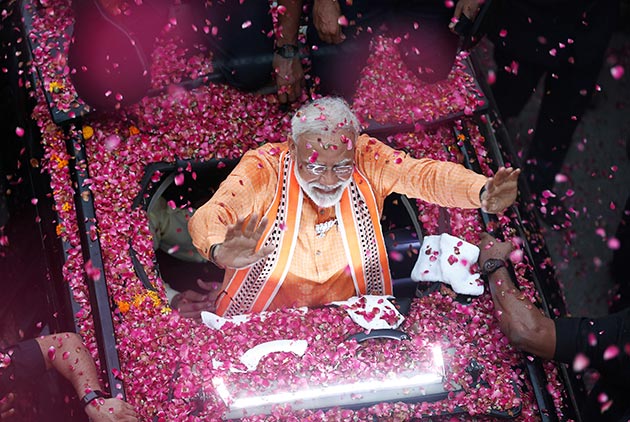10 Facts about India's Elections

Source:Shutterstock/REUTERS
The elections for India’s lower house of parliament, the Lok Sabha, are the biggest exercise in democracy in the world. As India’s population has boomed, organising the vote has become a vast logistical operation, costing tens of trillions of rupees (hundreds of millions of dollars).
Views
10 Facts about India's Elections
By Sean Flemingweb only
At stake is leadership of the world’s second largest population, which is on course to eclipse China’s within the next five years, and an economy some predict will overtake the United States by 2030.
The last election in 2014 saw Narendra Modi become prime minister leading a coalition dominated by his Bharatiya Janata Party (BJP), succeeding Manmohan Singh, whose Indian National Congress party under Rahul Gandhi fared poorly.
This year’s elections must be held by May. Here is what to look out for:
875 Million Potential Voters
India’s population is approximately 1.3 billion, and every Indian citizen over the age of 18 is eligible to vote. The Election Commission of India estimates that’s 875 million people, and has been making extensive efforts to encourage as many as possible to register.
1 Million Polling Stations
Voters will be able to cast their votes at an estimated 1 million polling stations, from the smallest rural villages to the bustling megacities of Delhi, Mumbai and Kolkata. The Election Commission has invested heavily in electronic voting machines, with stringent measures to prevent electoral fraud.
10 Million Election Officials
An army of 10 million national, state and local officials will be employed to ensure the vote is free and fair. To put that in context, that is as many as work for the US and Chinese militaries, Walmart and McDonald’s combined.
543 Elected Seats
India is divided into 543 geographical constituencies, each represented by a single MP. Voters do not directly elect a prime minister - he or she is usually the leader of the party or coalition with the most MPs.
In a reminder of India’s colonial past, 2 additional MPs may be appointed from the Anglo-Indian community if they are not otherwise represented.
8251 Candidates in 2014
The last elections in 2014 were contested by 8251 candidates, representing a huge diversity of political opinion and religious and ethnic backgrounds. The candidates also often reflect the divisions in India’s traditional caste system: Historically, certain sections of the population were excluded from economic or social opportunities, and how to redress those imbalances has become a matter for lively political debate.
The record number of candidates was 13,952 in 1996.
464 Political Parties in 2014
The number of parties has been growing rapidly in recent elections, with 464 represented in 2014.
National politics tends to be dominated by giants like Prime Minister Modi’s BJP and Gandhi-led Congress. But they are just the biggest partners in large, and ever-changing umbrella coalitions made of many smaller parties: More than 20 currently make up the BJP-led centre-right National Democratic Alliance, with at least 20 more joining the Congress-led centre-left United Progressive Alliance. At state levels, dozens more parties wield local influence.
66% Turnout
Turnout in 2014 was a record, with two-thirds of eligible voters participating in the elections. This compares to just over 60% of Americans who voted in the 2016 US presidential election, 69% turnout in the UK’s 2017 General Election, 70% who voted in Indonesia’s 2014 presidential elections, and nearly 80% in Brazil’s presidential election in 2018.
36 Days
India’s elections can take a long time. In 2014, polling was held on 10 different days from 7th April to 12th May, a 36-day-long period. The counting was done on 16th May, with the results declared the same day. This year’s election must take place by May, with the timetable likely to be announced in early March.
12% Women in Parliament
64 women currently sit in the lower house of India’s Parliament, just under 12% of the total number of MPs. This puts India 153rd on the global rankings of female representation, below neighbours Nepal (33%), Bangladesh (20%) and Pakistan (20%).
100 Million First Time Voters
An estimated 20 million Indians are turning 18 every year, meaning there are potentially 100 million young people who will be eligible to cast their vote for the first time. The major parties are mobilising huge resources into winning over these voters, who could be the key to winning power. Social media giants are also investing heavily in efforts to stamp out “fake news” and spot any illicit attempts to influence the election.
Original content can be found at the website of World Economic Forum: 10 things to know about India’s elections
This article is reproduced under the permission of World Economic Forum (WEF) and terms of Creative Commons Attribution-NonCommercial-NoDerivs 4.0 Unported License (“CCPL”). It presents the opinion or perspective of the original author / organization, which does not represent the standpoint of CommonWealth magazine.







